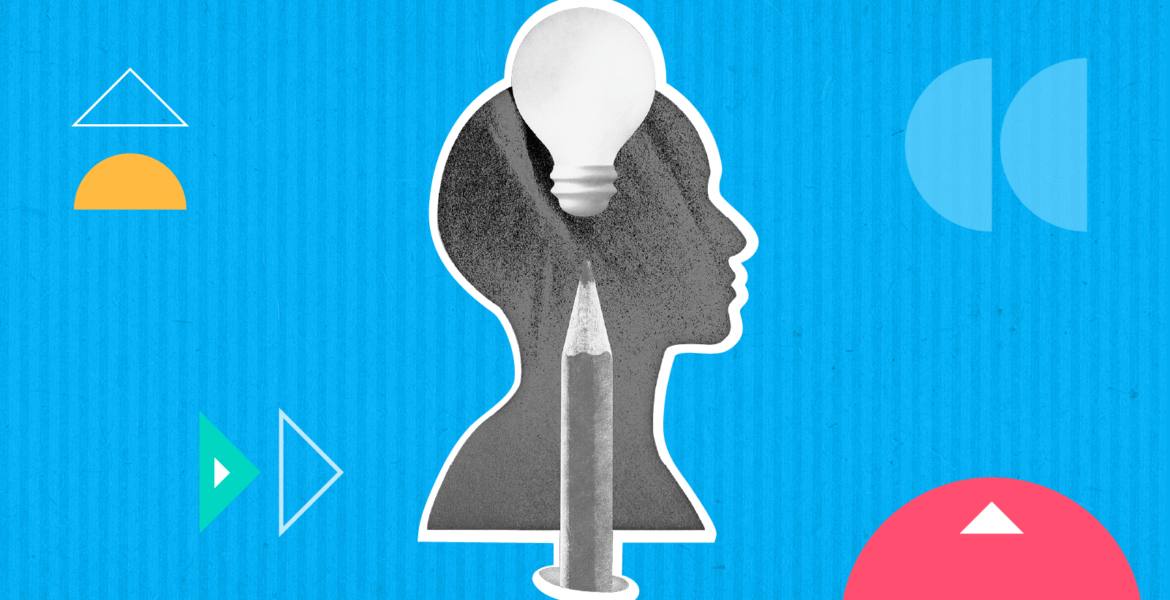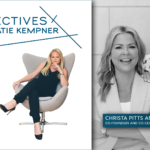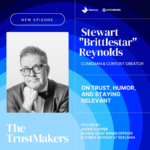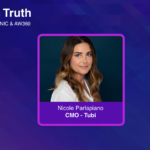By Adam Morgan, Twilio VP of Brand
In the timeline of human achievement, a marker has already been placed for artificial intelligence. This past Super Bowl, OpenAI centered their commercial around this idea, situating AI alongside the invention of the wheel, space exploration, and DNA sequencing.
But what happens when AI can write a sonnet, generate art in any style, or compose a song in milliseconds? It seems to infiltrate something we’ve always considered tied to the human condition: creativity. Yet AI will never be a one-to-one replacement, because the human mind is an imperfect system – and that’s what gives us an edge.
Neuroscientist David Eagleman borrowed the phrase “team of rivals” to describe our minds, which are made up of competing neural systems. We have emotions vs. rational thought, novelty-seeking vs. risk aversion…This tension and contradiction is what defines human thought and creativity. One day your brain will make a choice based on logic, the next choice may be based on an emotion. Or a random decision with no reason at all. It’s not linear. That’s what makes being a human exciting. We are unpredictable.
AI is more linear. It may be an accelerant – for brainstorming, research, or prototyping – but it can’t mimic the inner-workings of our minds.
The Eureka! Moment
There’s a lot of mythmaking around having a “stroke of genius” – the proverbial lightbulb flicks on, and we pull the perfect idea out of the ether. Newton saw the apple fall from the tree and came up with the law of universal gravitation. Paul McCartney said he woke up with the melody for Yesterday already in his head.
The truth is, these instances of “sudden” inspiration had likely been germinating for a while in the unconscious mind. We start by filling our heads with a ton of fodder on the topic. Only after our subconscious mind has worked on all that data, does it find a new connection. Sometimes these connections are random. Sometimes unpredictable. It goes back to the old advice to sleep on it or go for a walk when you’re stuck on a problem. Psychologists have talked about – and debated – this idea of the “incubation effect,” or when problem-solving comes from not actively thinking about the task at hand, but engaging the parts of our mind we associate with the subconscious.
Deirdre Barrett, a psychologist who studied the link between dreams and creativity, observed that dreams could help solve visual-spatial problems and facilitate breakthroughs when “conventional” wisdom was wrong. The German chemist August Kekulé would probably agree. He’s famously said to have discovered the structure of the benzene molecule after dreaming of snakes slithering into circles. At the time, all known molecules were thought to be structured as straight lines, but when Kekulé woke up, he realized the benzene molecule was a closed ring.
This isn’t to say the only thing separating us from AI is sleep. But it does show how our minds are constantly working in ways unknown to us. Think of how baseball players are able to hit a fastball in less than four-tenths of a second, even though it takes half a second for the whole sequence to consciously register. That’s instinct at work.
AI doesn’t have this sensory input; it can’t track the ways we mull over an idea both consciously and subconsciously. At the end of the day, AI is working inside a matrix, and we’re meshing together emotion, lived experience, and the empirical data we’ve picked up along the way.
The AI-human partnership
Though AI will never replace creativity, there are plenty of areas where it does excel over humans—like identifying patterns, predictive modeling, or processing massive amounts of data.
We’ve already seen this transform the way our customers work.
Trade Me, the largest online auction site in New Zealand, is using AI to predict the likelihood of someone bidding on an item or completing a purchase. AI’s ability to rapidly identify these customers means the marketing team has more time and autonomy to craft highly personalized campaigns.
Or there’s Cedar, a healthcare financial platform that simplifies payments between patients and providers. They’ve been using AI assistants to handle routine billing inquiries, so they can direct more complex questions to a human being. Dugan Winkie, Cedar’s Head of Commercial Strategy, noted how AI is helping their employees step in at exactly the right moment, equipped with the right information, “to deliver more meaningful, personalized care.”
The key here is pairing the strengths of AI with the strengths of human creativity and empathy. This is how you build a solution that’s greater than the sum of its parts.
Conclusion
Watching OpenAI’s Super Bowl spot, I was reminded of an Apple commercial that aired back in the ’90s. Also a black-and-white montage, the commercial featured several prominent leaders and visionaries – Albert Einstein, Dr. Martin Luther King, Mahatma Gandhi – with the now iconic slogan, Think Different.

OpenAI’s commercial focused on the tools that have propelled us forward; Apple on the people and ideas behind those innovations. Progress hinges on both – what we build, and what we can envision.
AI can be the brush, or the canvas, or even deliver a pastiche, but it’s not the artist. AI is more like paint by numbers – a curated process. There’s no doubt that AI is a crucial tool, but the defining feature of its success will be how we choose to use it.











